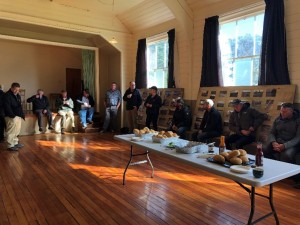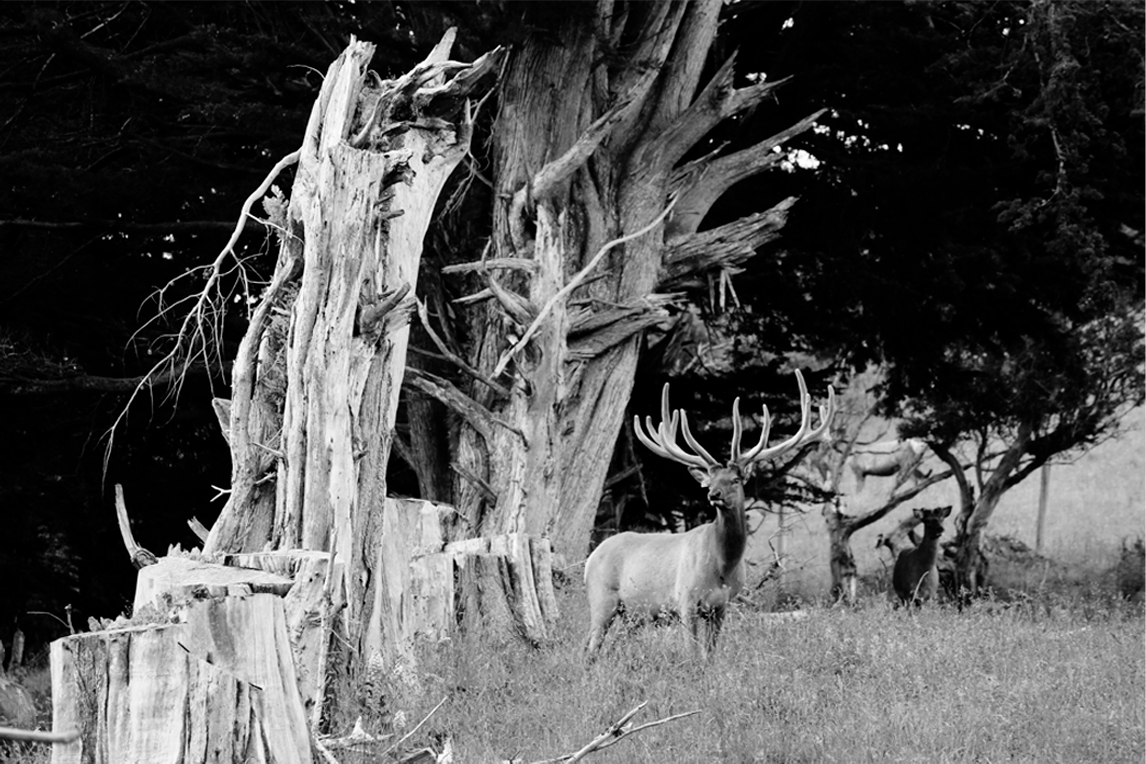May 19, 2023
Flood recovery, following the devastating Canterbury floods in 2021, was the topic of the conference field day held at Darryl and Lynne Butterick’s Ashburton property on 11 May. Lessons have been learned for future adverse events.

Left to right: Peter Swann, Darryl Butterick and Lorna Humm standing at the deer sheds which disappeared under water during the floods.
Interest was high with around 75 attending the event on a cold, but sunny, Canterbury day to see, two years later, how deer, beef and sheep farmer Butterick had managed the devastation from the event to his deer unit.
It also gave the opportunity to “recognise the journey our fellow farmers from the Hawke’s Bay are currently on,” said field day organiser and NZDFA Canterbury-West Coast chair Lorna Humm.
“She was a pretty hectic day,” Butterick recalled of his day that started at 6.00am with the emergency rescue of a neighbouring farmer from the top of a fencepost, 10 minutes before the fence was washed away.
Butterick’s deer fences and gates were completely gone, with posts scoured out by the force of the deluge, irrigation systems disrupted, his deer shed was completely inundated, he lost all of his valuable equipment on the floor of other sheds, the house was cut off and his deer and cattle were roaming free and “unsettled”.
Help was quickly at hand from the deer farming community and friends. These included deer farmers Peter Swann, also a volunteer fire fighter, who later worked with the Canterbury Rural Support Trust and veterinarian Humm.
Taking it one step at a time, most “went back where it was,” Butterick said, adding he had great personal support. He didn’t want to do a lot until “the river had settled”, but the first two to three weeks were “hard work”, then settled into a pattern: one or two meetings a weekday with bureaucrats; and getting on uninterrupted with farmwork at weekends.
His advice: “Try to slow down. Do it properly and do it only once.”
Weeds Butterick had never seen before “were popping up everywhere on farm,” he said.
Recovering pastures were spread with manure and straw from the sheds and, with the help of seed merchant Carrfields’ pastoral agronomist Johnny Doyle and Barenbrug, were sown with plantain and a mix of seeds – some did well, others didn’t. They found sunflowers “didn’t mind” the silt, deer “thrived on” the plantain, along with high-protein vetch, a legume that grows quickly, and that deer like and “do really, really well on”.
Even with the assistance of his insurance broker, Ben Cartwright of Associated Insurance Brokers, Butterick was still out-of-pocket after the experience, but is recovering.
Fencing off waterways creates its own problems

Relaxed discussion after lunch.
It was apparent being forced to fence off waterways “creates its own problems,” noted Swann. With trees growing in riparian planting and trapping silt, “we’ve just got to be conscous that it’s going to come back to bite us when we’ve got these adverse events,” he said.
While there’s a “physical logic” to the rationale of “excluding waterways to improve water quality,” noted DINZ producer manager Lindsay, “there are alternative ways to do that without investing in expensive infrastructure.”
Butterick’s experience, and that of Hawke’s Bay, presented the “opportunity to show government there are alternative ways” to achieve water health, other than fencing off waterways, he felt.
Farmers agreed NZDFA branches should be talking to their regional councils, which should be “taking ownership of this” focusing on the issue at a water catchment scale.
As DINZ environmental stewardship manager Sara Elmes said: “You can have a healthy stream, without fencing.”
The same outcome can be achieved through the use of sediment traps and constructed wetland, amongst others, it was suggested.
Update: New funding for silt and debris management in Hawke’s Bay and Tairāwhiti
New funding has been made available to help farmers with the management and removal of silt and debris from flat land in the Hawke’s Bay and Tairāwhiti regions.
As commercial properties, deer farmers and growers are among those able to apply for help with clean up and to return to profit from a $70 million government fund. Available via local council grants, the processes for which are still being developed, applications will be subject to set criteria: the first $40,000 will be fully-funded by the Crown, including any funding already provided through earlier support programmes. Above that will be shared on a 50:50 basis, with assistance capped at $210,000.
More funding, $102 million, has also been set aside to help councils process and dispose of all the debris coming from residential properties and to deal with sediment on council land.
MPI has also updated its Feed Coordination Service factsheet. After all the recent extreme weather events, this will give deer, and other, farmers tips about potential feed pressure points over winter. It is important to note that support is available to help feed planning and sourcing extra feed to prevent animal welfare issues.
More information about funding for silt and debris removal >>

